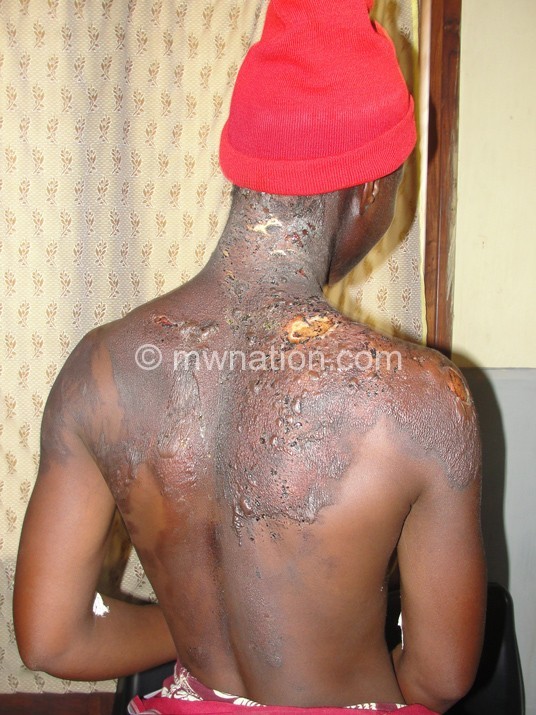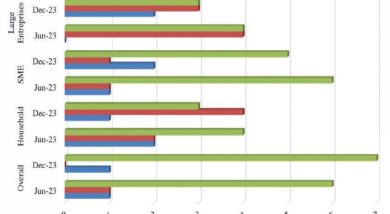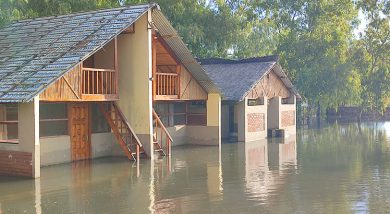Curbing sexual violence: Are our laws helping?
Malawi continues to experience cases of sexual violence, especially among couples. Does the country have strong laws to arrest this?
————————-
 Mary from Bvumbwe, Thyolo does not need the World Health Organisation (WHO) to define sexual violence for her. The 26-year-old mother of six has lived it all—and today, she bears its consequences.
Mary from Bvumbwe, Thyolo does not need the World Health Organisation (WHO) to define sexual violence for her. The 26-year-old mother of six has lived it all—and today, she bears its consequences.
Married off at the age of 15, Mary, a primary school drop-out, could not fight her parents’ decision because, she too, felt marriage could ease her pain of survival.
Well, it did in the first four years, she says, tears rolling down her dry and cracked cheeks.
“He was a loving husband. As a carpenter, he made sure we had food and the children had clothes,” she explains.
Had her 48-year-old husband remained caring, she could not be living with the virus—divorced and sharing a three-bedroom house with her mother in the remotes of Bvumbwe.
“In the fifth year, he found another wife and that marked the end of our happy marriage.He only visited me once a week to force me to sleep with him.
“With time, he didn’t come for months. He stopped providing for the family and I was helpless,” says Mary.
Preferring to suffer in silence, Mary did not take the matter to the ankhoswe. She opted to confront her husband right at his new wife’s home.
Dazed and embarrassed, the husband lost his temper and poured his anger on her. She was beaten severely and left for dead.
“It was their neighbours who took me to the hospital. He did not care,” she explains.
After a month, the husband apologised and they reunited. It only lasted for three months. She claims they quarreled often because she demanded an HIV test.
The husband, she further claims, could not stand being ‘forced’ to go for the test. He later returned to his second wife, leaving Mary with a two months old pregnancy.
“I complained to my parents, but they insisted I return to my house. I even reported to police, but they too insisted that marital issues were better settled by cultural systems,” she explained.
Today, five years after giving birth to the last child, she has not seen him.
The pains she has suffered at the hands of a man who promised to be her guiding angel explains, to a larger extent, the scale of gender-based violence (GBV) which in her case also qualifies for sexual violence.
According to the WHO, sexual violence amounts to any sexual act, attempt to obtain a sexual act, unwanted sexual comments, advances or acts to traffic or otherwise directed, against a person sexuality using coercion, by any person regardless of their relationship to the victim, in any setting, including, but not limited to home or school.
The 2010 Malawi Demographic Health Survey (DHS) shows that 41percent of women reported physical or sexual violence. Of these, 16 percent reported experiencing physical violence only; while 13 percent experienced sexual violence only and 12 percent experienced both physical and sexual violence.
The DHS further states that 65 percent of girls experience some form of child abuse during their lifetime, compared to 35 percent of boys. About 23 percent of girls aged 15 to 19 years are married compared to less than 2 percent of boys.
In most cases, sexual violence has resulted in early pregnancies, transmission of sexually transmitted infections (STIs), early or forced marriages leading to a high rate of widows and school drop outs among girls.
Last month, the Coalition of Women Living with HIV and Aids (Cowla) released a research study that shows sexual violence is adequately covered under policy and legislation.
Cowla’s programmes manager Steve Iphani, however, explains that this adequacy is achieved when several instruments have been read together.
He adds that the Penal Code is broad in its provisions without placing sexual violence in any particular context.
“This is clearly a challenge although this challenge is quickly cured by legislation on special topics such as the Prevention Domestic Violence Act (PDVA) and the proposed legislation on trafficking in persons.
“Under the PDVA provision for the Penal Code, offences in a domestic environment is made,” he says.
Iphani further explains that the broadness of the Penal Code gives an opportunity to regulate sexual violence in a number of different environments.
Similarly, he notes that the Gender Equality Act also provides for the prohibition of sexual violence in the form of sexual harassment and punishes it accordingly.
Despite this, Iphani notes that there is need to review the Penal Code to remove old terminology such as ‘carnal knowledge’ with respect to rape and other sexual offences and replace them with gender neutral terms such as sexual activity.
He says although the regulation of sexual violence is comprehensive under various statutes, cases of sexual violence have been on the increase and have received wide media coverage.
To curb this vice comprehensively, he says consideration could be made for the regulation of this vice under a singular statute.
Talking to some stakeholders on sexual violence, it is clear that many sexual violence cases go untried and perpetrators unpunished because they are usually breadwinners, he says.
“Often, complainants, parents or guardians of victims make effort to withdraw cases from the police or the courts where the accused is a breadwinner or a person of influence in society,” he explains.
Iphani further underlies that public awareness needs to inform the citizenry that criminal matters are not negotiable and that criminal matters are against the State.





